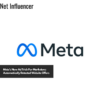Strategy
What is Social Media Analysis – The Basics Of Social Media Analysis And How It Can Help You Understand Your Audience And Improve Your Marketing Strategy
Knowing your audience – their preferences, habits, and reactions – can be huge in helping you craft effective campaigns that yield positive results. But with such an overwhelming amount of data out there, it can be hard to make sense of it all. In this post, we’ll take a look at the basics of social media analysis and how it can benefit your business. We’ll also touch on some of the tools and techniques that you can use to get started.
If you’re like most businesses, you probably have a social media presence in the form of a Facebook page, Twitter account, Instagram profile, and other accounts. You know it’s important to spread branded messages about your company on these platforms — but do you really understand how your audience is engaging with them?

Social media analysis can help provide insight into how customers interact with your brand online. By understanding the basics of analyzing posts and comments on various platforms, you can gain valuable insights that will empower you to decide how best to interact with followers or target future customers. Keep reading to learn what it takes to get started!
What is Social Media Analysis, and How does it Work?
An in-depth exploration of the digital realm, social media analysis is an invaluable tool to obtain a clearer picture of customers, competitors, and industry trends. Beyond merely collecting data from platforms such as Twitter, Facebook, Instagram, or YouTube, it dives deeper by analyzing likes/dislikes/shares engagements – allowing businesses access to understanding customer behavior better than ever!
Through data analysis, companies can gain valuable insights that help them make informed decisions. This includes gaining a better understanding of customers and their sentiment towards services or products; discovering influencers; monitoring competitors’ progress; locating new opportunities to market campaigns more effectively – all this is possible with the proper collection and interpretation of crucial data!
What Are the Benefits of Social Media Analysis?
From social media analysis, businesses can gain an invaluable window into how their customers feel about them and what strategies competitors use to capture more attention. Additionally, companies are able to track industry trends that allow for the identification of opportunities like effective marketing campaigns or unique value propositions tailored toward existing customer needs. All in all, this type of data-driven insight enables organizations with a powerful tool that helps maximize success now and well into the future!
How to do Social Media Analysis – The Steps Involved
Understanding what resonates with your audience on social media isn’t rocket science, but getting it right requires a bit of detective work. So how can you do social media analysis, and what are the steps involved?
Step 1: Gather Your Data
Start by gathering intel on your followers’ engagement with your content. From likes and shares to comments, impressions, and more, there are many platforms that will let you dig into your social media success data. Make sure you leave no stone unturned when it comes to figuring out how people interact with all aspects of what you post!
Step 2: Analyze Your Data
Now that you’ve put in the hard work of gathering data, it’s time to start reading between the lines. What is hidden within your followers’ engagement levels? Investigate further and uncover which types of posts have hearts aflutter – is there any common trend among them all? Find out what content speaks best to your audience!
Step 3: Adjust Your Strategy Accordingly
After analyzing your data, it’s time to take your social media game to the next level! Analyze what works, and replicate elements of those high-performing posts for future content. Don’t be afraid to experiment with visuals or language on lower-performing pieces, too – a few simple changes could lead them straight into viral territory. Keep evaluating, adjusting, and optimizing; you’ll keep pushing towards even greater achievements each step of the way!
The Metrics You Need to Track for Doing Social Media Analysis Successfully
Keeping track of your progress on social media with all the numbers floating around can get confusing! Therefore we’ve compiled a list to make it easier for you to focus more time and energy on the most critical metrics.
Engagement Rate
Your engagement rate is a great way to measure how successful each post has been with your followers. All it takes are a few simple calculations: take the interactions on any given post and divide that by the number of people following you, then multiply by 100 for an easy-to-understand percentage – this will show which content resonates best with your audience.

Conversion Rate
Your conversion rate measures how many people take a desired action after seeing your post. For example, if you’re running a promotion and want people to click through to your website, your conversion rate would be the number of people who clicked through divided by the total number of impressions multiplied by 100. Conversions can be anything from clicking on a link to making a purchase, so make sure you’re clear about what action you want people to take before calculating your rate.
Impressions
An impression is defined as “one instance where a post from [your] Page or about [your] Page enters someone’s screen.” In other words, it’s one instance of your post being seen by someone, regardless of whether or not they interact with it. Impressions are important because they give you an idea of how far your reach is—how many people see your content. To calculate your impressions, take the total number of times your post has been seen, divide it by the number of followers you have, and multiply by 100. This will give you a percentage representing the portion of your followers who have seen your post.
Audience Growth Rate
Your audience growth rate measures how quickly your following is growing over time. To calculate this metric, take the total number of new followers divided by the total number of old followers and multiply by 100. This will give you a percentage representing the portion of new followers out of all. A high audience growth rate indicates that people are interested in what you’re posting and sharing it with others, which is always a good sign!

Tools and Platforms That Can Help You do Social Media Analysis!
Analytics tools are designed to help you measure and track the performance of your social media profiles. Here are some tools and platforms you should consider using to improve your social media presence.
Sprout Social
Sprout Social is a comprehensive platform for managing all of your social media accounts in one place. It includes a wide array of features such as analytics reports, influencer identification, scheduled messaging, and more. It also allows you to monitor conversations around specific topics or hashtags on Twitter and Instagram.

Hootsuite
Hootsuite is another tool that helps you manage multiple accounts in one place. It’s great for creating scheduled posts across multiple channels and tracking their performance over time. Hootsuite also has an impressive suite of analytic tools that allow you to measure the success of each post on each platform in real-time.
BuzzSumo
BuzzSumo is a great tool for discovering which topics are trending on social media and discovering new influencers in any given niche market. It gives you access to data on the most-shared content from any domain or topic so that you can identify what kind of content resonates with people to create better content strategies for yourself or your clients.
Brandwatch
Brandwatch is an AI-powered platform that helps businesses analyze customer conversations on social media across various channels, including forums and reviews sites, as well as Twitter, YouTube, Instagram, etc. It offers deep insights into customer sentiment by analyzing large volumes of data quickly so that businesses can make better decisions based on customer feedback without having to manually search through hundreds or thousands of comments/posts themselves.
Google Analytics
Google Analytics offers a powerful set of tools for tracking website traffic as well as engagement metrics from individual pages/posts on social networks like Facebook, Twitter, LinkedIn, and YouTube (among others). This allows you to gain valuable insights about who is visiting your website from each channel, how long they stay on the site, when they arrive there from each channel etc., helping you optimize your overall digital marketing strategy accordingly.
Tips for Getting the Most Out of Your Social Media Analysis
- Define your goals: What is the desired outcome of your social media analysis efforts? Whether it be increased brand recognition, driving website visits, or converting leads – when you have a clear goal in mind, metrics can help evaluate and monitor progress towards those objectives.
- Know your audience: Understanding who you’re communicating with is key when crafting social media updates. Take the time to think about your target audience – it’ll help drive more impactful content and give valuable insights into how effective your efforts are!
- Use analytics tools: From Hootsuite Insights to Google Analytics and Sprout Social, a variety of free and paid options are available that can give you valuable insights into your progress. Use those or other similar tools to see where you’re excelling – or what areas may need extra attention!
- Compare apples to apples: Gaining an accurate understanding of your social media progress requires comparing data from similar time frames. Review metrics over successive weeks or monthly cycles for the most precise picture possible!
- Identify what’s working: Analyze your success closely, and determine which tactics are the most productive! Push those activities to get more impact. Don’t waste time on things that aren’t working – take note of what’s not successful so you can stay focused on what’s working best!
- Make adjustments as needed: As you monitor and analyze your social media presence, make any small or large tweaks that can help propel your results in the desired direction. Keep refining and striving for success!
Wrap up
Well, there we have it – the lowdown on social media analytics. With this insight under your belt, you can craft content designed to connect with customers and optimize your marketing strategies! Plus, who knows – uncovering all these nuggets may even end up being something totally enjoyable for you.



















